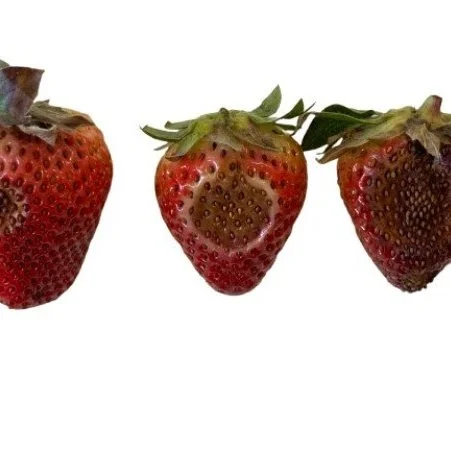The 2025 soybean planting season in Louisiana began rapidly, with 70%-80% of the projected acres planted by May 1, significantly exceeding the average of 40%-50%. Although most of the crop was planted within the optimal window, heavy rainfall and strong winds have led to issues such as failed stands and delayed weed control applications.
Read MoreOrganizations like the Ouachita Parish 4-H Club are working to recruit more young people to take part in livestock shows.
While the number of participants is growing, 4-H leaders say there’s still a need for more youth to get involved. Bethany Corona, with the Ouachita Parish 4-H Club, says time and cost can be major barriers for some students.
Read MoreCommon rust may be the first disease found in corn fields and usually occurs in the lower-to-mid-canopy. Pustules of common rust are brick red to dark orange, somewhat elongated, and will appear on both leaf surfaces (Figure 1).Common rust will progress during relatively cool temperatures (60-75oF) combined with rainy weather or heavy dews (6 hours of leaf wetness), and cloudy weather; however, very rarely are fungicide applications warranted for common rust. Warmer temperatures (> 80oF) will greatly slow common rust development.
Read MoreWhen Morgan Christman was a doctoral student at Utah State University, she studied data from moth traps over a five-year period in Utah. What shocked her most about her findings wasn’t related to moths. It was the tens of thousands of bumblebees that were accidentally trapped alongside the moths every year.
Read MoreAcross Louisiana, the feral pig population continues to grow. They can be found in all 64 parishes, and the total number of feral pigs is around 900,000 in the state.
"When I first started this, I thought Texas had a pig problem, not Louisiana. However, when you look at the population estimates for the states and compare it by the land area, we have about the same density of feral pigs as Texas," LSU AgCenter's Interim Southeast Regional Director Glen Gentry said.
Read MoreLast month, Matt Lee, vice president for agriculture and dean at LSU’s College of Agriculture, was tapped to serve as LSU’s interim president.
Business Report sat down with Lee to discuss his plans for the university.
Read MoreThe American Sugar Cane League, in partnership with the United States Department of Agriculture (USDA) Agricultural Research Service (ARS) and the LSU AgCenter, has announced the release of USDS ARS HoCP 18-803, another new variety for Louisiana sugarcane farmers to utilize.
This milestone is the latest result of more than five decades of collaboration between the League and its research partners. It also stands as a clear example of what sustained investment and industry-wide commitment can deliver.
Read MoreWhen Aaron Ashbrook was an undergraduate in college, he spent a summer working on Mackinac Island, Michigan. On the second-to-last day of his visit, he hung up some clothes to dry and later found that a bat made its way into his room and was residing in his clothes.
Read MoreWhen a Tangipahoa Parish strawberry farmer contacted LSU AgCenter horticulture agent Mary Helen Ferguson about his crop loss, at first glance, she observed symptoms that alone could have been related to a number of common diseases. It wasn’t until she took a closer look that she found something more concerning.
Read MoreThis guide provides a general overview of the common insect pests affecting soybean crops in Louisiana. It includes descriptions of each pest’s life cycle, morphological characteristics, feeding behavior, and the damage they cause to soybean plants. The guide also offers visual identification tips.
Read MoreMatt Lee, LSU's vice president for agriculture, will serve as the university's interim president starting July 1, the university said Monday.
He will serve as interim leader while the university conducts a national search for a permanent president. The announcement follows the news that LSU President William Tate IV will step down after June 30 to become president of Rutgers University in New Jersey.
Read MoreAcross the state, Louisiana Master Gardeners are building vegetable gardens in elementary schools, beautifying public spaces with landscaping and lending their green thumbs to a variety of projects.
In 2024, more than 2,500 volunteers gave 83,391 hours to their communities through the LSU AgCenter Louisiana Master Gardener Program.
Read MoreBaton Rouge native and new LSU graduate Janice Pearson has always been passionate about Louisiana’s wild spaces. With a natural resource and ecology management degree, she’s turning that passion into purpose as she steps into a new role with LSU’s School of Renewable Natural Resources as a wildlife research technician.
Read MoreA seven-year collaboration between Loveland Products, Inc., and the LSU AgCenter is driving innovation in rice breeding and agricultural research. Through the LPI Research Station Support Fund, Loveland has provided critical resources that have enabled the AgCenter to expand its rice breeding program, launch impactful grant writing initiatives and support early-stage research projects.
Read MoreThe Louisiana Drought Team (LDT), in coordination with the national USDM authors, agreed to “status-quo” across the state this week. Thus, D0 “abnormally dry” coverage was maintained but not expanded across portions of Cameron and Vermilion parishes.
Several periods of rain during the 7-day monitoring period resulted in street/nuisance flooding in some areas, saturated or over-saturated soils, and rivers and streams rising to near or above flood stage. Moisture demands will be increasing as we move later through spring and into summer, but right now moisture reserves are more than sufficient to meet that increase.
Read More














